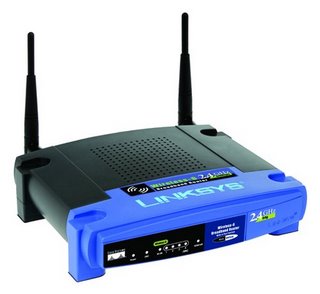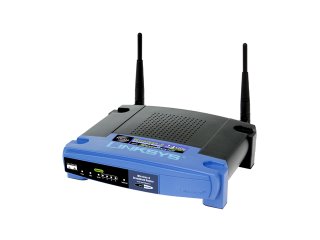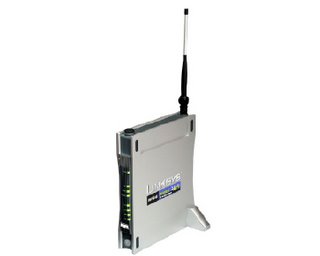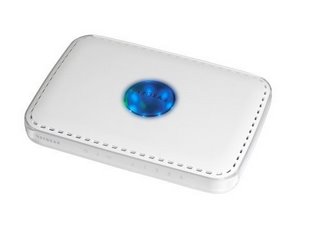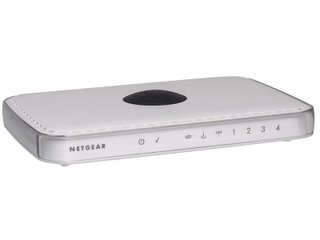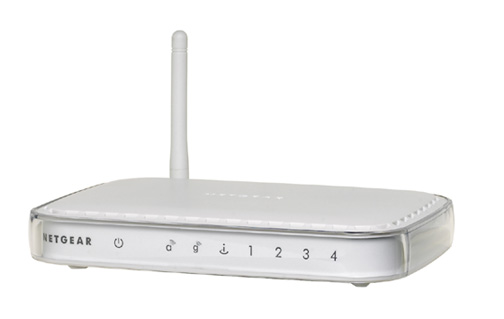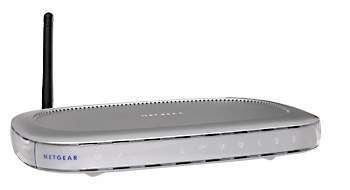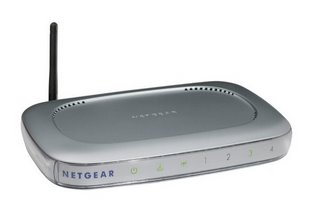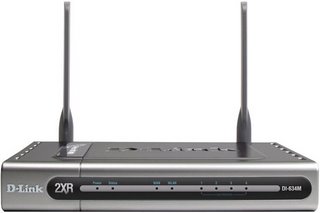20. Boot Camp or Parallels Guide to Running Windows on an Apple MacIntel
by Darryl Ponting, England
From Notebook Review
20. Boot Camp or Parallels Guide to Running Windows on Apple MacIntel
Introduction
Turn the clock back to January 22nd 2006 and to a competition started by enthusiasts to have Windows XP and OS X coexisting on a Mac. Donations were taken and steadily the prize fund grew to a whopping $13,854. 2 months went by with no success then in March 2006 it was announced the competition was over. No sooner had the prize money been handed over had Apple announced their own solution to Windows XP on a Mac, a far more elegant solution and one that consumers could feel a lot more comfortable with.
With Intel's new Core Duo processors they introduced something called Virtualization (in particular native virtualization), this allows an operating system to run inside another with little if any loss in CPU speed. Mac users had up until now relied on Virtual PC by Microsoft to run Windows on OS X, unfortunately due to the difference in the x86 chips commonly used in PCs from Dell, Sony etc and the old PowerPC chips used by Apple up until this year meant that there was a massive performance hit. With the switch to Intel Apple have removed this stumbling block and have opened many opportunities for it's OS X operating system.
Currently there are 2 solutions for Mac owners with an Intel chip for running Windows XP on their machine. First up is the solution from Apple called Boot Camp and secondly is the Virtual Machine (with Virtualization) from Parallels. So what's the difference? With Boot Camp Windows will be running "natively", this means it will be running on the machine as if it was running on any regular PC from any manufacturer. This means full access to the CPU, Graphics and all other aspects. With Parallels Windows XP will be running on a "Virtual Machine", this means that OS X will be running like normal with Windows XP running inside a separate application, in effect two operating systems running at once.
Apple present a quite glowing report on Parallels eve though it's a relative newcomer to the Mac scene, here's a snippet from what they had to say about it on their software page:
"The most powerful, easiest-to-use, cost-effective desktop virtual PC solution available today. It empowers any user, from experienced professional developers to sales executives to casual home users, with the ability to create completely networked, totally secure independent, maximally stable virtual machines on a single physical machine."
Both Boot Camp and Parallels Desktop are in pre-release stage as of writing with Boot camp being beta and Parallels being at RC2 (release candidate 2) stage. As such both pieces of software are free to use right now but when they're both final they'll have their respective costs. Parallels is currently $39.99 to pre order and $79.99 on release if you don't pre order. Boot Camp will be included in Apples next release of OS X, OS X 10.5 Leopard which will be (I imagine) $129.99 and will be one of the "hundreds" of features I'm sure Steve Jobs will try and sell us.
Each different method has its pros and cons and depending on what your need for Windows is one solution will be better than the other for you. In this article I will attempt to outline every pitfall and advantage one solution has over the other and along the way inform you enough to help you make your decision. This area of Macs may be the one remaining question you have before jumping ship and switching!
Setup
Each method has a few additional steps than you may be used to with a regular Windows XP installation, these involve the preparation but after these steps are done it's exactly the same as every Windows XP install you've been lucky enough to have done.
One word of warning, each installation will require activation but both setups are recognized as separate PCs so only one will activate. If you intend on trying both Boot Camp and Parallels then I advise delaying activation until you have made your decision on which to use.
Boot Camp:
Home page | Download Guide (389KB)
Apple has a thorough installation guide for setting up Boot Camp so I'll run through the procedure briefly.
- Updating your firmware. This may or may not be necessary depending on the age of your Intel based Mac, to find out if you require the update simply run Software Update and if you require it then it will appear in the list. Alternatively you can go to Apples download site and search for your particular firmware upgrade (e.g. Mac Mini firmware update")
- Run the Boot Camp assistant. After installing Boot Camp you will find an application in your Utilities folder that does 2 things. Firstly it will create a CD for you which will contain all the necessary drivers for Windows XP and secondly it will partition your hard drive
Note, to setup Boot Camp you need to have a single Mac OS X partition formatted as Extended (Journaled) volume. If you have multiple partitions then you must restore the hard drive to a single partition before starting.
After the hard drive has been partitioned and the CD burnt you are prompted to restart your PC at which point Windows XP will install like normal.
When the installation is finished you must install all of the drivers contained on the "Macintosh Drivers CD" which was created by Boot Camp, this contains the drivers for Bluetooth, Wireless, Video and the chipset. It also includes a few small utilities to help day to day life in Windows XP such as a small application that runs on startup which will allow you to use your eject key on the keyboard and another which will allow you to adjust the brightness.
Parallels:
Parallels Desktop follows a similar pattern to previous Virtual Machine software if you've ever tried them before. Upon starting the configuration wizard you are presented 3 options. The first will create a blank virtual machine with the default settings that will allow you to get started straight away, for those who want a little bit more control there's the "custom VM configuration" option that allows you to select the OS, Memory allocation and create a new virtual hard disk. Choosing the custom VM option is the best option in my eyes as memory allocation and hard disk size/type are the 2 biggest defining factors in performance when it comes to virtual machines.
Initial Setup:
Choosing your Operating system:
 (view large image) |  (view large image) |
Memory allocation and Hard Drive selection:
 |  |
When choosing a hard drive you have two options, an expanding hard drive of a plain hard drive. As the description states, running an expanding hard drive will save on disk space but Parallels will have to keep monitoring free disk space and increasing the size of the virtual hard drive when needed. This could reduce performance but the difference is negligible.
Network Selection:

There are three types of network to choose from, the first will allow full access to both the Internet directly and OS X, the second will create an isolated connection between OS X and the guest operating system with the third turning off network access altogether. I chose the first option and I suspect it's the option 99% of Parallels users will use.
You then choose which real life network adaptor you want Parallels to be tied to. For example if you use wireless all the time you would want to bind it to that to enable Internet access.
Network binding option:

Finally you give it a name (e.g. Windows XP) and the virtual machine is created.
Pros and Cons
As expected each method has its good parts and bad parts, below is everything I've picked up so far.


Everyone will have their reason for wanting or needing to run Windows on their Mac. For some it may be the excuse they need to switch to OS X without losing their beloved PC gaming, for others it could be the ability to run an application they can't leave behind. Whatever your reason will greatly impact your choice between Boot Camp and Parallels.
My reason for running Windows was because I need to run Visio 2003 on a day-to-day basis and this meant I needed (well, wanted) a snappy GUI. For others it may be a simple application or running ActiveX applets in Internet Explorer. Which one was the best option for me? Read on and find out.
Ease of setup:
As you can see there is a lot more preparation work involved in Parallels Desktop compared to Boot Camp, in reality it's a lot less time than this article suggests with both options running at around 5-10 minutes preparation time. This is something to consider when choosing between the 2 so if you're not too confident on performing either of these then I'd recommend Boot Camp as it has the typical Apple ease of use and holds your hand through the few steps it has, it's likely to be even easier when included as part of OS X. Both have support forums from their respective developers, Apple has one on their discussion forums and Parallels have one on their forums.
Installing Windows XP takes roughly the same time on both machines, this is to be expected as at this point it's relying on the CPU quite a lot so Boot camp can't really offer one of it's major advantages over Parallels just yet.
Hands On
Boot Camp:
With Boot Camp there's not really much to say in comparison to Parallels. It runs very fast, about as fast you would expect Windows to run on a similarly specified Windows laptop from someone like Acer, Asus, Dell, Sony or IBM. One aspect that Boot Camp has to its disadvantage is the difficulty in which you can share files with OS X, you have a few options but I'm not too keen on any of them. The first option is setting Windows XP up on a FAT32 partition, this will allow OS X to read and write to the Windows XP partition but not vice versa.

Macdrive is a utility from MediaFour that allows Windows to read and write to a HFS+ partition, perfect in this situation as it allows maximum compatibility between operating systems as demonstrated in the table above.
One of the biggest reasons for choosing Boot Camp over Parallels is full access to the graphics hardware allowing far better responsiveness in the GUI as well as the ability to play games. Of course it helps if your Mac has a decent graphics card such as the X1600 in the Macbook Pro but that's a different discussion. Personally I own a Macbook and as such it's limited by the GMA950 included but with other Macs the difference will be far greater. For example you could play Half Life 2 on your Macbook Pro under Boot Camp at 40-60 FPS but you couldn't play the game under Parallels as it will still emulate a 8MB graphics card.
Parallels:
Because of the nature of Parallels it can perform a lot worse than Boot Camp depending on the capabilities of your Mac. If you only have 512MB of RAM then this is shared between 2 operating systems and as such performance can drag a little, if you have the luxury or 1-2GB RAM then you can allocate 512MB -- 1GB of RAM to Parallels with plenty left for OS X. This is an area that Boot Camp doesn't have to worry about because it has full access to all of your memory, something to consider if you are limited on RAM.
With CPU intensive tasks there is barely any difference in actual speed between Boot Camp and Parallels but there is a bigger perceived difference because of the way the GUI responds. One of the tests I performed in my Macbook review was a Photoshop test that is CPU intensive; the results show that it's almost on par with Boot Camp with not really any discernable difference.
One area that this benchmark doesn't show is the responsiveness of the GUI in Parallels, although the benchmark was performed in suitable time the "feel" of Photoshop wasn't as nice as using it in Boot Camp.
Parallels auto resolution adjusting video
Parallels trackpad scrolling video
If you're only after a small application every now and again the inconvenience of rebooting into Windows is probably too much, this is one of the biggest advantages that Parallels can offer over Boot Camp. Parallels can resume to a usable Windows desktop in less than 9 seconds but a reboot into Boot Camp can take over 60 seconds with the added disadvantage of having to close whatever you're doing in OS X.
The above example is based on booting Windows XP fresh with Boot Camp (not restarting from OS X) and the Parallels time is based on resuming the virtual machine. There is no need to ever shut down the virtual machine as every time you quit Parallels you have the option to suspend instead of turning off the virtual machine.
After setting up Windows in Parallels one of the first things you should do is install the "VM Tools", this adds lots of functionality as well as increasing the performance.

One of the most useful tools that's included is the Shared Folders Tool, this allows full access to any specified folder on your OS X partition without the need for extra (paid for) software. Setup is simple but must be performed when the virtual machine is turned off (or suspended), the tool has the ability to share individual folders and set them as Read Only if required.
The folders specified appear in the Parallels Shared Folder on the desktop with a slight lag of around 3-4 seconds the first time you open it, each time from then on it will be as instant as any other folder within the virtual machine.
Gaming Performance:
One area that Mac owners feel pretty envious about is PC gaming, every now and again a classic will roll around and although their machine is powerful enough to play it it's a Windows only experience. One of these is Half Life 2 and I know just by gauging peoples questions dotted around the forums that this is one of the games they want to know performance figures for, in particular on the Macbook. Well here they are:
This is on a 2.0GHz Macbook with 2GB RAM and 5400RPM 100GB Hard Drive. This simple isn't possible on Parallels and you could argue that it wasn't intended to be used in this way. As time goes on then hopefully we'll get some sort of direct access to the graphics on these Virtual machine applications then we'll be able to play games.
Virtue Desktops and multiple displays
One of the more impressive videos you may have seen around the net is the one of OS X doing a neat cube transition into Windows XP; this is made possible by a virtual desktop program and Parallels. The virtual desktop program in question is VirtueDesktops, this will allow Parallels to be running on it's own desktop in full screen whilst you use your normal programs in OS X on another.
Once you've installed VirtueDesktops you can configure the 2 desktops by clicking the menu bar item and selecting Inspection -- Desktops...
After doing this you simply navigate to your Windows XP desktop and launch Parallels then enter full screen, you now have 2 virtual desktops with one as OS X and the other as XP. I've personally come across a few glitches whilst running these two programs together but it's worth noting that they're not final. One of the biggest gripes I have is that the hotkey for switching between desktops works fine until Parallels has captured your keyboard and mouse, then it ceases to work.
Parallels and Virtue Desktops video
A far more elegant setup is with 2 monitors; you can have Parallels running full screen on the second monitor whilst continuing to work on OS X on the primary monitor.
Parallels Dual Monitor setup video
One of the problems I encountered was that Parallels couldn't pick up the resolution I wanted of 1360*768 on my TV although I imagine this could be sorted with something like Powerstrip.
Conclusion
Mac users have never been so lucky in terms of choice when it comes to Windows compatibility and the outlook is even brighter. Boot Camp will have all its kinks ironed out and will be included in OS X 10.5 Leopard, whether it's in the same form I don't know and Parallels is currently approaching its final release. The choice to be made really boils down to one thing; it's a trade off between convenience and speed. Boot Camp is faster than Parallels by far, especially when it comes to GUI responsiveness and gaming but depending on what you need Windows for speed might be worth giving up for the ability to run Windows and OS X at the same time. If you're a web developer for example and want to check out how your site renders in IE6 then Parallels will be ideal, develop on OS X then quickly flick over to IE6 in a virtual machine to check it out, all in less then 30 seconds. If you're after something with a bit more or intend on using Windows for any decent amount of time then I'd suggest Boot Camp, for what I need Windows for it's a much more satisfying experience using Windows XP natively then it is under a virtual machine. As demonstrated above gaming is only really possible on Boot Camp because of the emulated graphics on Parallels so if you're hankering after a bit of PC gaming on your Mac you only really have one choice. The other thing to consider is cost, at the moment Parallels is a $39.99 pre order with the program being $79.99 on release. Boot Camp on the other hand is a free beta right now and will be a technology bundled into OS X 105 Leopard, of course you'll have to pay for the OS when it finally gets released but I imagine most Mac users will be buying it anyway.
There's a lot to consider when making your choice so hopefully this article has helped, maybe it's given you the confidence to try out both for yourself and see which one suits you better, either way don't go having too much fun on Windows because OS X will be sat here waiting.
Related Downloads




































